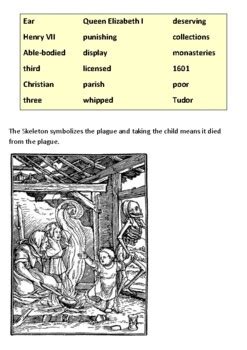poor laws tudor|english poor laws history : 2024-09-23 After the dissolution of the monasteries, many people were forced to become vagrants and beggars. Tudor monarchs and the elite were unsympathetic towards vagrants and .
Where to buy an Audemars Piguet watch near me? Audemars Piguet Best Price at Jaztime.com: Buy, Sell or Trade. In many ways, Audemars Piguet watches are even more exclusive than Rolex .
0 · poor relief laws
1 · english poor laws history
2 · Altro
According to Logo Realm, the first Breitling logo only featured the company’s name in an elaborate script. However, the company continued making advancements with the chronograph under the leadership of Gaston Breitling. In 1915, Gaston introduced the . Meer weergeven
poor laws tudor*******The Tudor poor laws [1] were the laws regarding poor relief in the Kingdom of England around the time of the Tudor period (1485–1603). The Tudor Poor Laws ended with the passing of the Elizabethan Poor Law in 1601, two years before the end of the Tudor .La prima forma di Poor Law fu la cosiddetta Ordinanza dei Lavoratori ("Ordinance of Labourers") di epoca medioevale, promulgata da Edoardo III d'Inghilterra il 18 giugno del 1349, e ampliata nel 1350. Questo statuto fu approvato per far fronte alla situazione di degrado e impoverimento generalizzato venutasi a creare a seguito della grande epidemia di peste del 1348, con una diminuzione della popolazione compresa tra il 30 e il 40% del totale. Il declino della manodoper.
The English Poor Laws were a system of poor relief in England and Wales that developed out of the codification of late-medieval and Tudor-era laws in 1587–1598. The system continued until the modern welfare state emerged in the late 1940s. English Poor Law legislation can be traced back as far as 1536, when legislati.

Poor Law, in British history, body of laws undertaking to provide relief for the poor, developed in 16th-century England and maintained, with various changes, until after .
poor laws tudor english poor laws historyPoor Law, in British history, body of laws undertaking to provide relief for the poor, developed in 16th-century England and maintained, with various changes, until after .
By Alexandra Briscoe. Last updated 2011-02-17. Elizabethan England faced a mounting economic problem as the poor became poorer, and a growing army of vagabonds and beggars roamed the streets and.After the dissolution of the monasteries, many people were forced to become vagrants and beggars. Tudor monarchs and the elite were unsympathetic towards vagrants and .Some of the most important Tudor Poor Laws were enacted during the reign of Elizabeth I. In 1572, the Act for the Punishment of Vagabonds and the Relief of the Poor and .Key learning points. The 1601 Poor Law divided the poor into three distinct categories based upon their ability and willingness to work. These categories were dealt with .This chapter on the poor law in the 19th century begins with a discussion of the English poor law and how it became the most comprehensive system of public poor relief before .poor laws tudorLe Poor Laws erano un sistema assistenziale rivolto alle fasce più povere della popolazione, attuato in quello che è l'attuale Regno Unito nelle sue forme originarie a .

Life in Elizabethan England - AQA The Poor Laws. Elizabeth’s reign was seen as a ‘golden age’ of culture and exploration, but society was characterised by extremes of rich and poor.
Tudor poor laws placed responsibility for dealing with the poor at the level? a) State b) Federal c) Local d) Church. c) Local. With respect to the Tudor Poor Laws, beggars and vagrants who were unable to work were considered , while beggars and vagrants who were able to work were considered . Tudor governments did not really know what to do about the poor, because in many ways they did not understand the causes of poverty. It was widely assumed that many were just lazy and refused to .The Act for the Provision and Relief of the Poor was a statute passed by the Parliament of England during the reign of King Edward VI. It is a part of the Tudor Poor Laws and reaffirms previous poor laws enacted in 1536 , 1547 , and 1549 which focused primarily on the punishment of vagabonds. [1]
Las Poor Laws [2] ("Leyes de Pobres" [3] o "Leyes de Asistencia Pública" [4]) fueron un sistema de ayuda a los pobres en Inglaterra y Gales [5] que se desarrolló a partir de la Edad Media tardía y de las leyes Tudor, antes de ser codificado en 1587-1598. El sistema de las Poor Laws existió hasta el surgimiento del Estado de bienestar .english poor laws historyThe Poor Relief Act 1601 [1] (43 Eliz. 1.c. 2) was an Act of the Parliament of England. The Act for the Relief of the Poor 1601, popularly known as the Elizabethan Poor Law, the "43rd Elizabeth", [a] or the "Old Poor Law", [b] was passed in 1601 and created a poor law system for England and Wales. [3]It formalised earlier practices of poor relief distribution .As Poor Laws [2] foram um sistema de ajuda social aos pobres em Inglaterra e Gales [3] que se desenvolveu a partir da Idade Média tardia e das leis Tudor, antes de ser codificado em 1587-1598. O sistema das Poor Laws subsistiu até ao surgimento do Estado de bem-estar moderno depois da Segunda Guerra Mundial. [1]Las Leyes inglesas para los pobres fueron un sistema de ayuda para los pobres en Inglaterra y Gales que se desarrolló a partir de la codificación de las leyes de finales de la Edad Media y de la era Tudor en 1587-1598. El sistema continuó hasta que surgió el estado de bienestar moderno después de la Segunda Guerra Mundial. La legislación .Monasteries supported the poor in the early Tudor period. After the dissolution of the monasteries, many people were forced to become vagrants and beggars. Tudor monarchs and the elite were unsympathetic towards vagrants and beggars. The 1601 Poor Law, issued by Elizabeth I, was the most far-reaching Act to support those living in poverty. The Elizabethan Poor Laws were very controversial and sparked a lot of debate. Some people believed that the laws were too harsh and that they did not do enough to help the poor. Others believed that the laws were too lenient and that they encouraged laziness. The Elizabethan Poor Laws were eventually replaced by the Poor .The English Poor Laws [2] were a system of poor relief in England and Wales [3] that developed out of the codification of late-medieval and Tudor-era laws in 1587–1598. The system continued until the modern welfare state emerged in the late 1940s. [1] Although many deterrent workhouses developed in the period after the New Poor Law, some had .Poor Law, in British history, body of laws undertaking to provide relief for the poor, developed in 16th-century England and maintained, with various changes, until after World War II. The Elizabethan Poor Laws, as codified in 1597–98, were administered through parish overseers, who provided relief English Poor Laws: Historical Precedents of Tax-Supported Relief for the Poor . In 1601, England was experiencing a severe economic depression, with large scale unemployment and widespread famine. Queen Elizabeth proclaimed a set of laws designed to maintain order and contribute to the general good of the kingdom: the English Poor .
The Vagabonds Act 1530 (22 Hen. 8.c. 12) was an act passed under Henry VIII and is a part of the Tudor Poor Laws of England. In full, it was entitled "An Act directing how aged, poor and impotent Persons, compelled to live by Alms, shall be ordered; and how Vagabonds and Beggars shall be punished." 1572 — the first compulsory local poor law tax was imposed making the alleviation of poverty a local responsibility. 1601 — the 'Elizabethan Poor Law' was passed. The law offered help: The able-bodied poor were to be set to work in a House of Industry. Materials were to be provided for the poor so they could do the job.Poor Laws from Henry VII through to Elizabeth Learn with flashcards, games, and more — for free.
The Elizabethan Poor Laws, enacted in 1563 and further developed between 1597 and 1601, . ⭐⭐The Context:⭐⭐ The Tudor period was one of immense social change. The dissolution of monasteries, coupled with economic fluctuations and rising prices, led to a surge in poverty.
English Poor Laws Explained. The English Poor Laws were a system of poor relief in England and Wales that developed out of the codification of late-medieval and Tudor-era laws in 1587–1598. The system continued until the modern welfare state emerged after the Second World War.. English Poor Law legislation can be traced back as far as 1536, .
Bekijk onze selectie breitling art voor de allerbeste unieke of custom handgemaakte items uit onze shops.
poor laws tudor|english poor laws history











